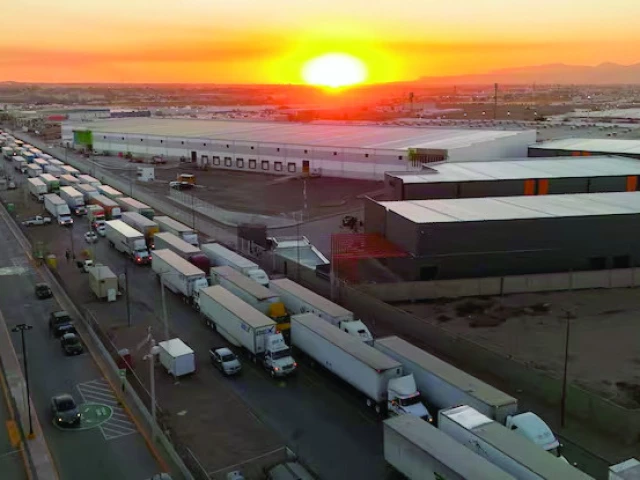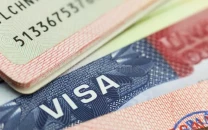Trade tariff chaos and its global fallout
Since US is Pakistan's largest market, there are concerns any tariffs can severely impact exports

In line with his campaign promises, President Trump announced new tariffs (customs duty or taxes on imports) more than a week ago – 25% on Mexico and Canada and 10% on imports from China.
While China had anticipated such measures, Mexico and Canada had hoped they would be avoided due to the deep economic integration of North America. However, once the executive order was issued under the "America First Trade Policy," affected businesses and governments scrambled to prevent its implementation.
Just hours before the tariffs were set to take effect, negotiations secured a temporary postponement for Canada and Mexico, though the tariffs remained in place for China.
The president has often spoken of tariffs being "the most beautiful word in the dictionary" and as a "pot of gold in getting everything else you want". However, the data does not support this claim.
Tariffs can work for pressurising small economies like Colombia, which was coerced to accept the repatriation of its illegal immigrants through military planes; they are not easy to apply to larger economies as they result in retaliation.
When Trump imposed tariffs on Chinese products during his last term in 2017, China reacted through its tariffs. Besides the higher prices that the US consumers had to pay for imported products, the US farmers suffered huge losses.
Almost all the $61 billion tariffs that were collected between 2018 and 2020 had to be paid to the US farmers as compensation for their losses.
It is estimated that if the US goes ahead with its new planned tariffs, the direct cost for an average US household would be a tax increase of more than $1,200 a year.
Contrary to the popular belief, tariffs are not paid by the foreign governments exporting goods but by importers. These costs are typically passed on to consumers. Since lower-income households spend a larger share of their income on essential goods, tariffs contribute to greater economic inequality in society.
If we look at the last hundred years, high tariffs have never worked for any country. The last major episode of tit-for-tat tariffs occurred in 1930 when the US Congress raised tariffs on over 20,000 products. The increased tariffs and retaliatory measures led to a two-thirds reduction in trade and a one-third contraction in GDP not only in the United States but in many other trading partners.
US unemployment rose to 25% (15 million people) in 1933. This plunged the world into the Great Depression, which lasted most of the decade.
After the end of the Second World War, the leading trading nations negotiated an agreement so that such a situation would not arise again. They also worked to gradually reduce tariffs over the next few decades. Since then, tariffs have been falling, with several forward-looking developing countries such as East Asians, China, Chile and Turkey joining developed nations.
Overall, the earlier a country integrated into the global economy by removing tariff and non-tariff barriers, the quicker it became prosperous. On the other hand, countries like Pakistan, Argentina and Egypt which have remained glued to their tariffs, have become laggards and the most frequent borrowers from the IMF. These examples show that raising tariffs is not the solution to any country's trade challenges.
Since the US is Pakistan's largest single-country export market, accounting for $5 billion in goods exports in 2023 (17% of Pakistan's total exports), there are concerns that any tariffs on Pakistan could severely impact its exports. The risk would be particularly pronounced if Trump were to implement its reciprocal tariffs policy for countries with trade surpluses, as Pakistan currently has over $3 billion surplus with the US.
However, the chances are remote as Pakistan does not account for 0.3% of US imports. Furthermore, the major US exports to Pakistan, such as raw cotton, machinery, chemicals and aircraft, face minimal tariffs (below 5%). In contrast, Pakistan's key exports to the US, including made-up textiles and clothing, are already subject to significantly higher tariffs, averaging over 15%.
That said, there is a potential upside. If major competitors, which are also among the major bilateral trading countries of the US, face new tariffs, Pakistan could gain a slight competitive edge. This is particularly relevant as some currently benefit from free trade agreements with the US, while Pakistan already pays standard tariffs. Some investors may also relocate their industries here as they look for new destinations to avoid US tariffs.
The writer is a Senior Fellow at Pakistan Institute of Development Economics. Previously, he has served as Pakistan's ambassador to WTO and UN's representative to the United Nations at Geneva



















COMMENTS
Comments are moderated and generally will be posted if they are on-topic and not abusive.
For more information, please see our Comments FAQ